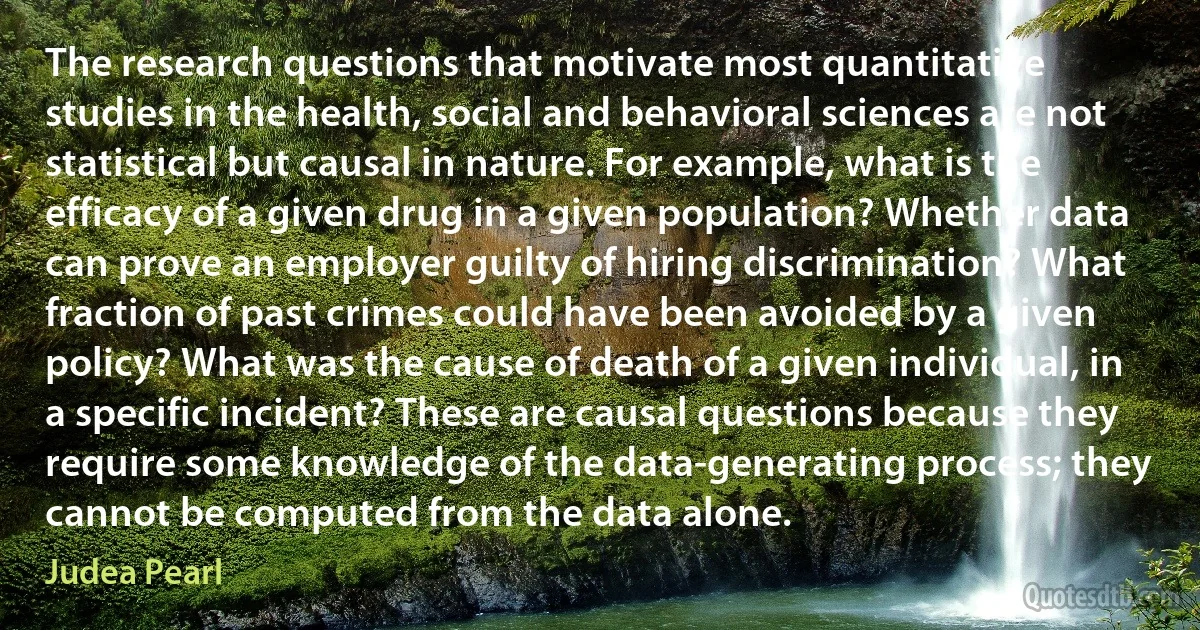Judea Pearl quotes
An event recognised as responsible for the production of a certain outcome... Human intuition is extremely keen in detecting and ascertaining this type of causation and hence is considered the key to construct explanations... and the ultimate criterion (known as "cause in fact”) for determining legal responsibility.
Clearly, actual causation requires information beyond that of necessity and sufficiency: the actual process mediating between the cause and the effect must enter into consideration.

Judea Pearl
Bayesian networks [is] a term coined in Pearl (1985) to emphasize three aspects: (1) the subjective nature of the input information; (2) the reliance on Bayes' conditioning as the basis of updating information; (3) the distinction between causal and evidential models of reasoning, a distinction that underscores Thomas Bayes' paper of 1763.

Judea Pearl
Traditional statistics is strong in devising ways of describing data and inferring distributional parameters from sample. Causal inference requires two additional ingredients: a science-friendly language for articulating causal knowledge, and a mathematical machinery for processing that knowledge, combining it with data and drawing new causal conclusions about a phenomenon.

Judea Pearl
When loops are present, the network is no longer singly connected and local propagation schemes will invariably run into trouble.. If we ignore the existence of loops and permit the nodes to continue communicating with each other as if the network were singly connected, messages may circulate indefinitely around the loops and process may not converges to a stable equilibrium... Such oscillations do not normally occur in probabilistic networks... which tend to bring all messages to some stable equilibrium as time goes on. However, this asymptotic equilibrium is not coherent, in the sense that it does not represent the posterior probabilities of all nodes of the network.

Judea Pearl
Haavelmo was the first to recognize the capacity of economic models to guide policies. This paper describes some of the barriers that Haavelmo's ideas have had (and still have) to overcome, and lays out a logical framework that has evolved from Haavelmo's insight and matured into a coherent and comprehensive account of the relationships between theory, data and policy questions. The mathematical tools that emerge from this framework now enable investigators to answer complex policy and counterfactual questions using simple routines, some by mere inspection of the model's structure.

Judea Pearl

